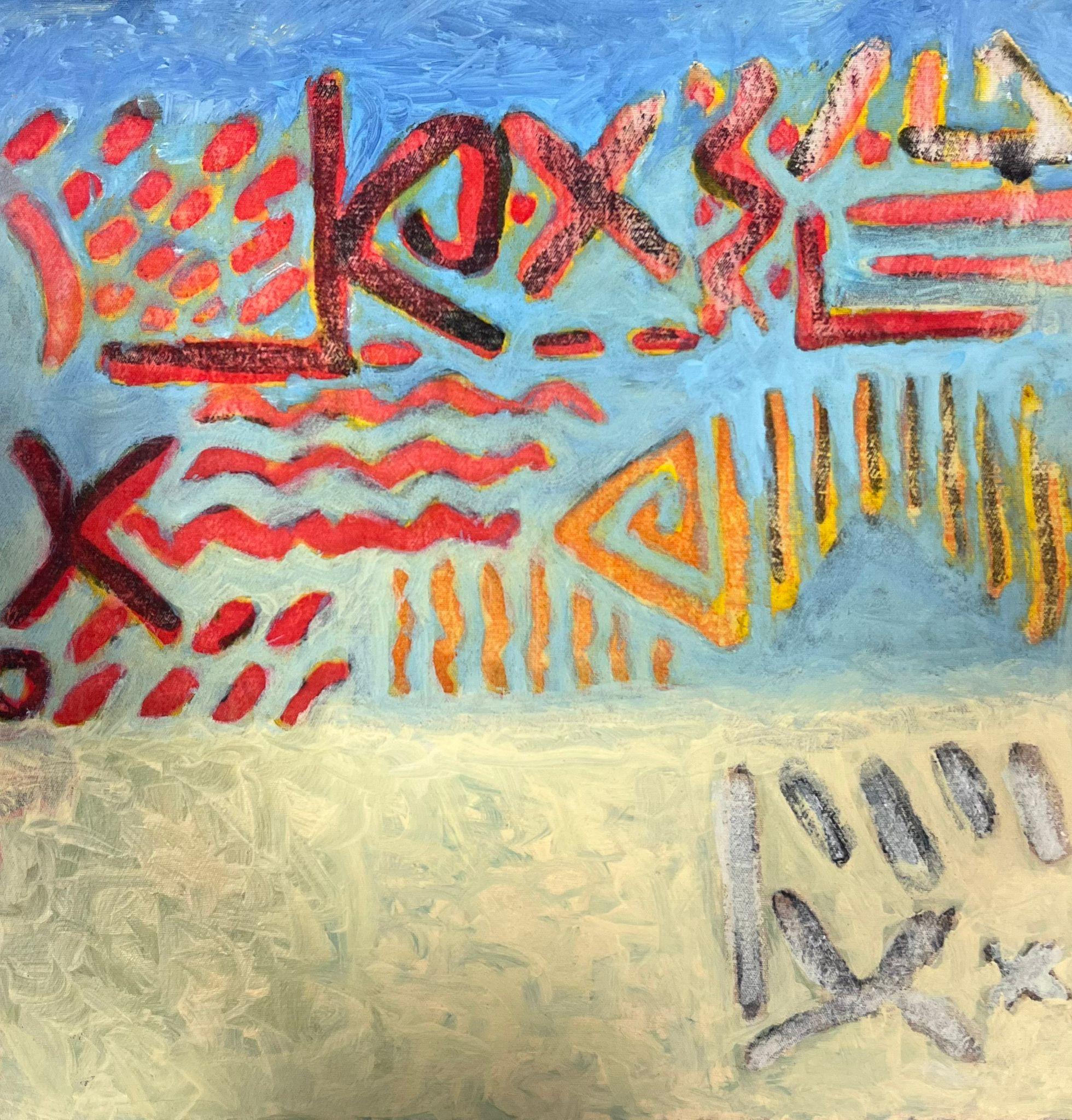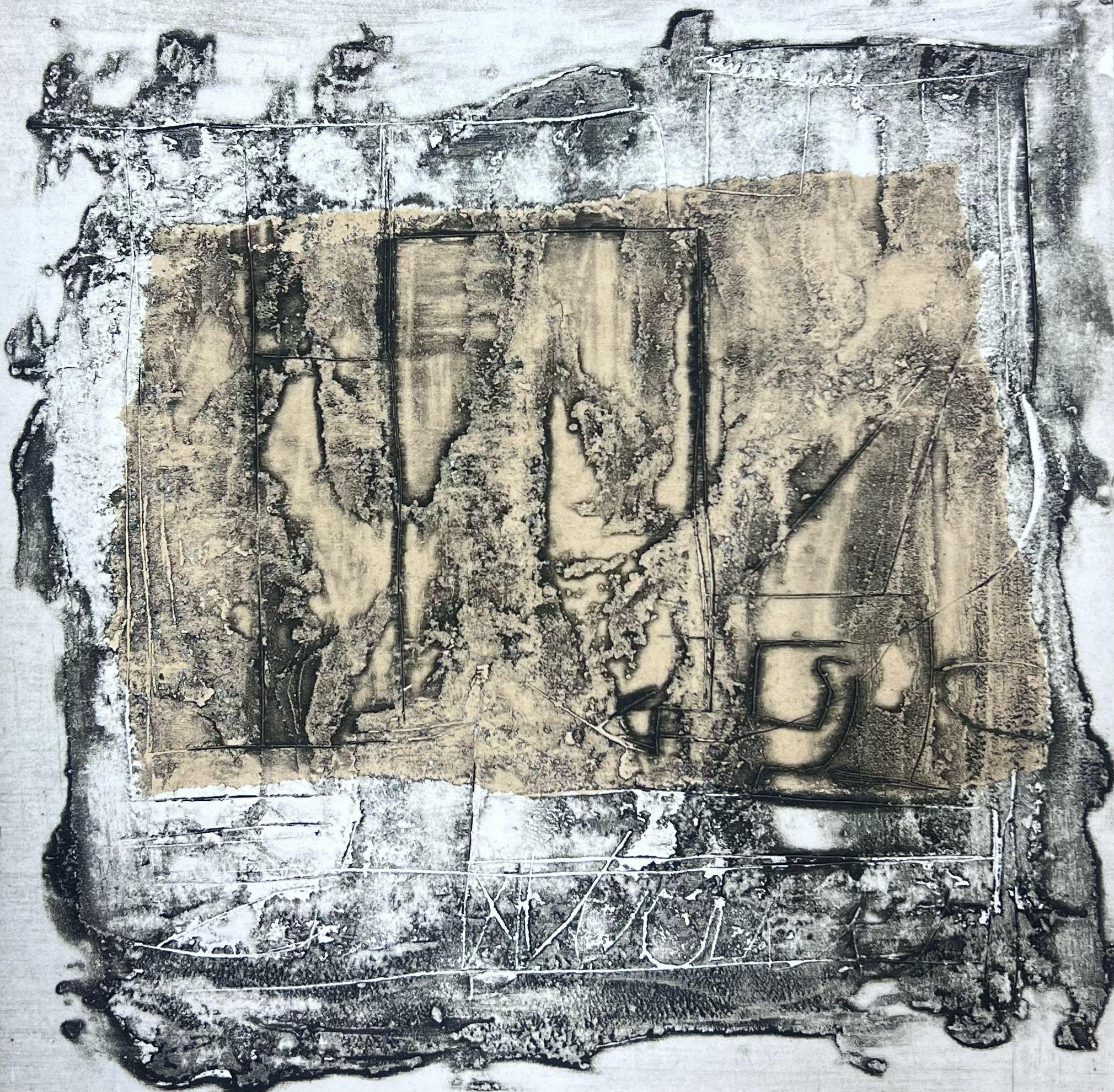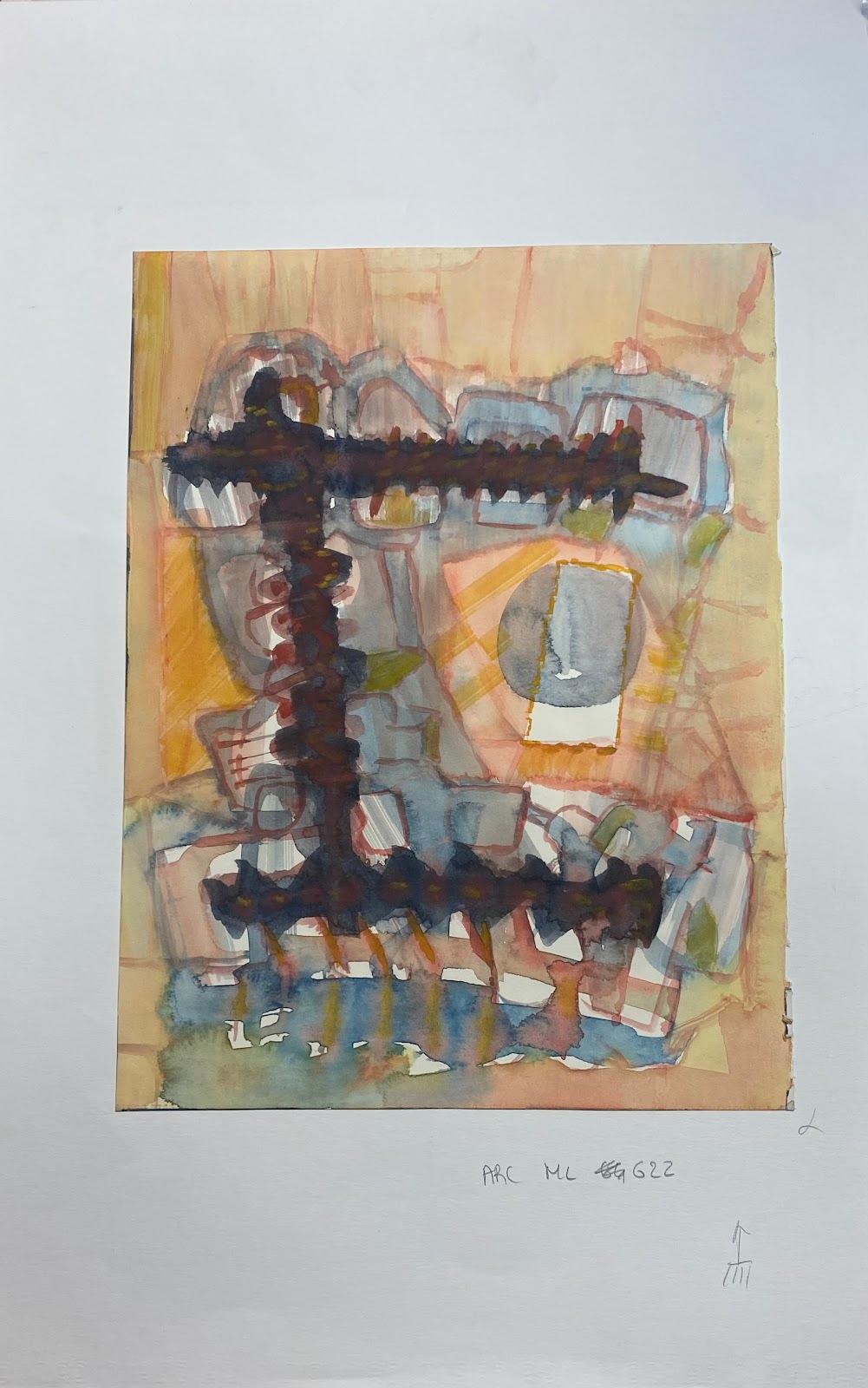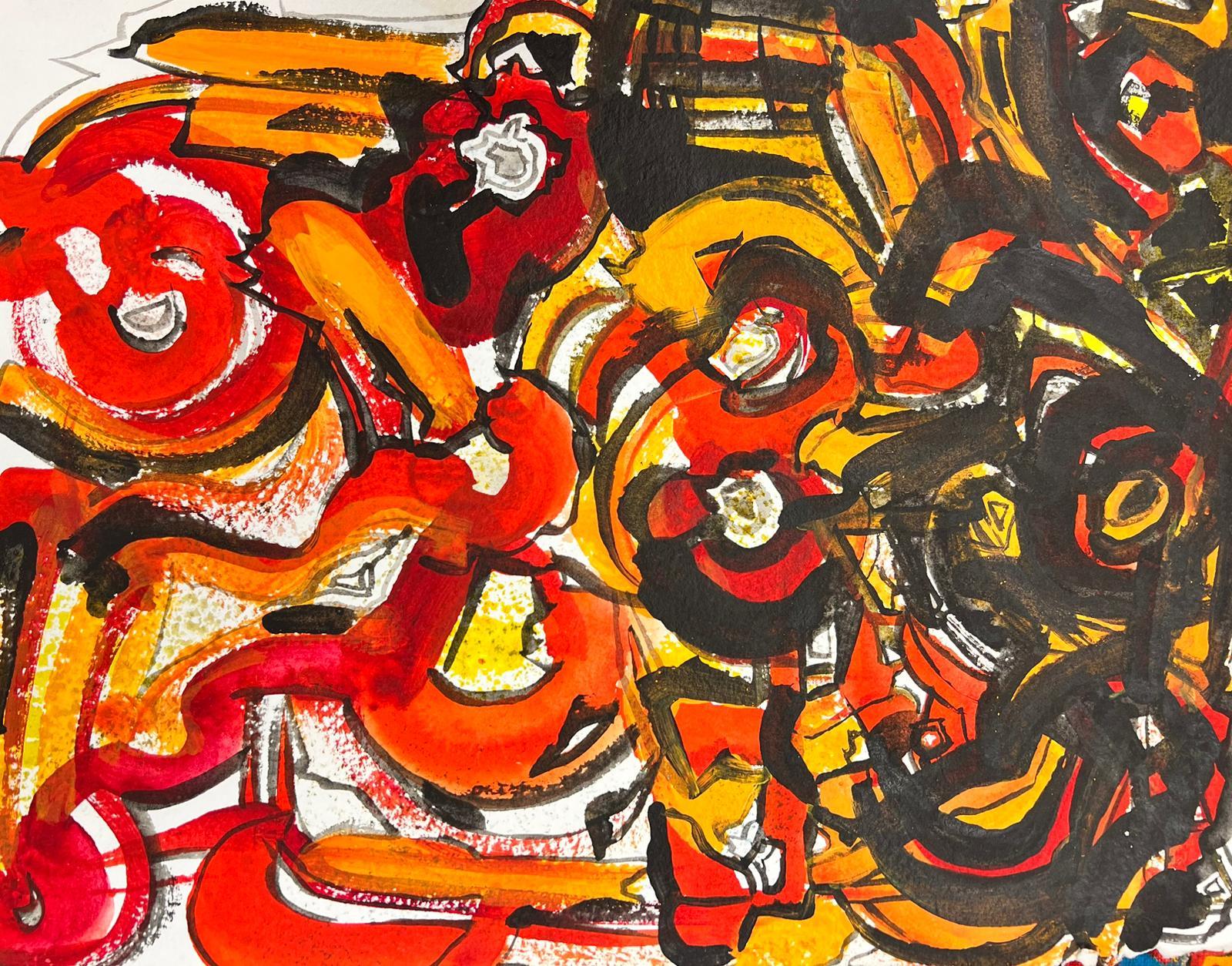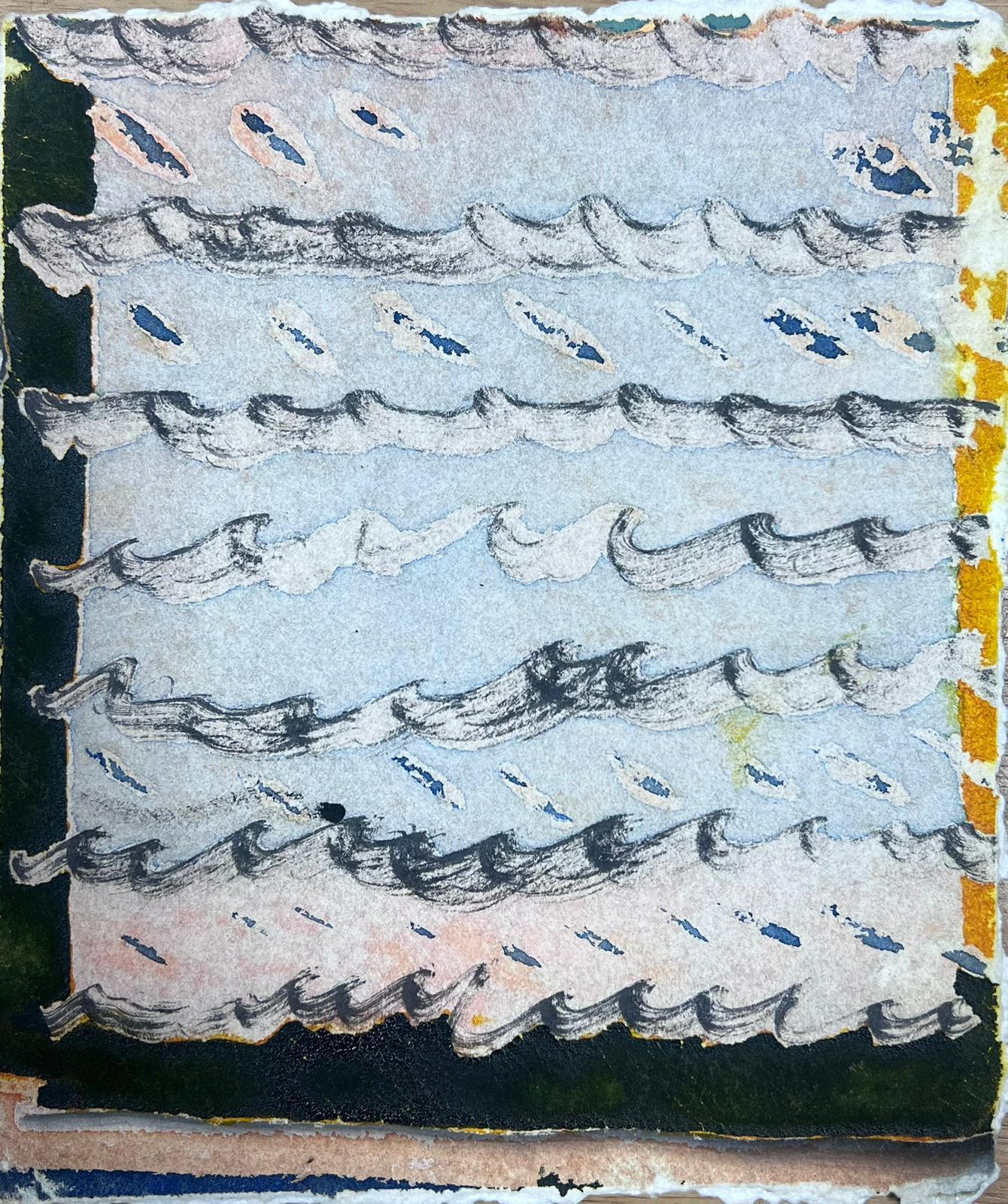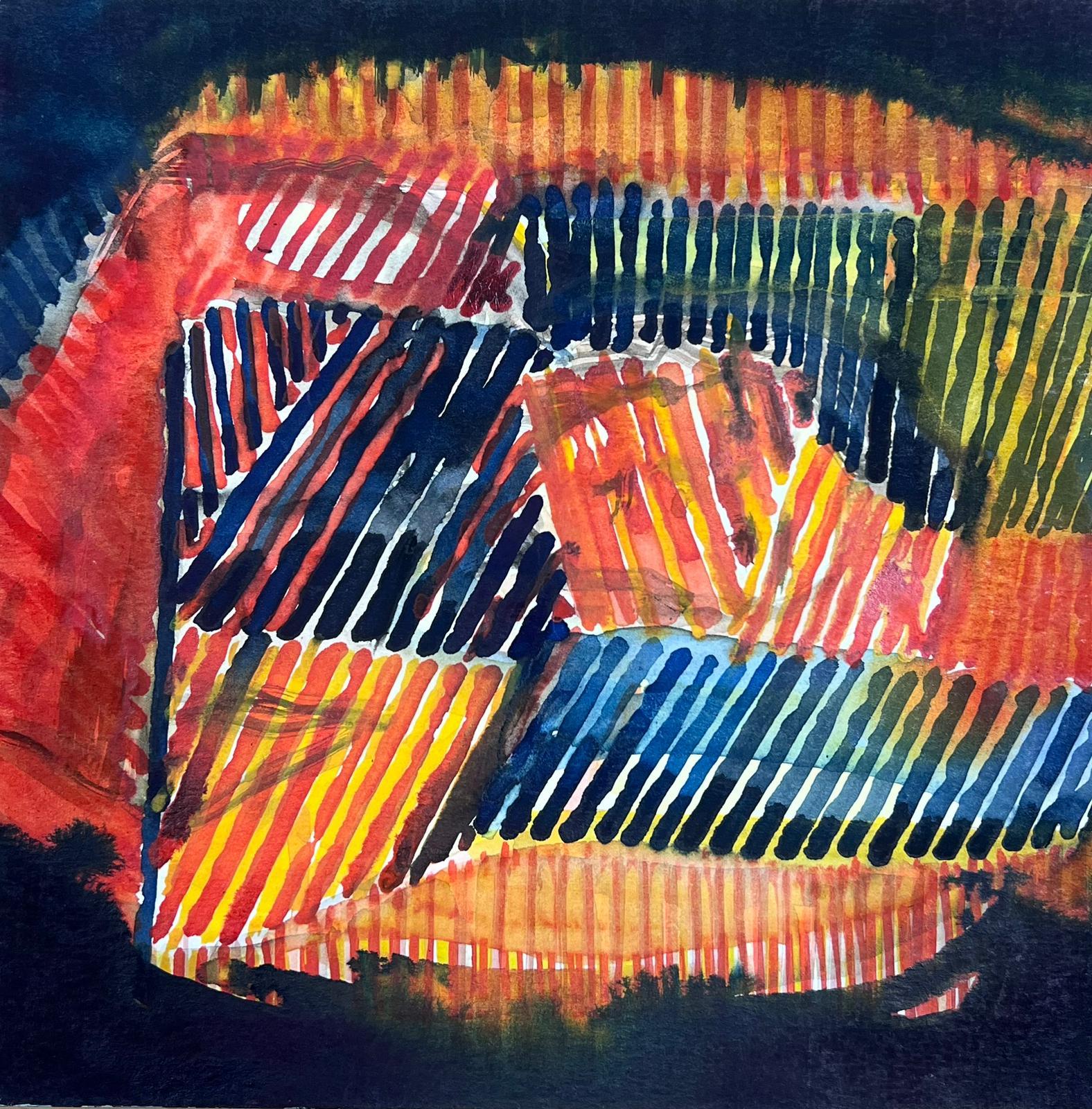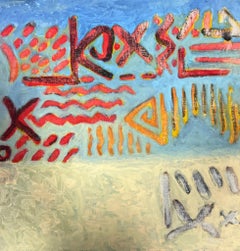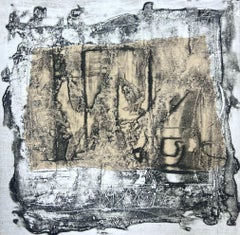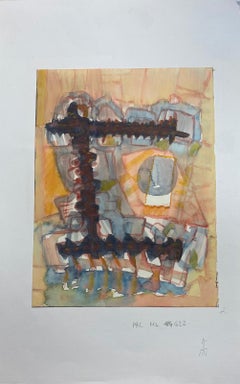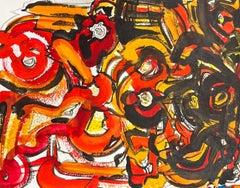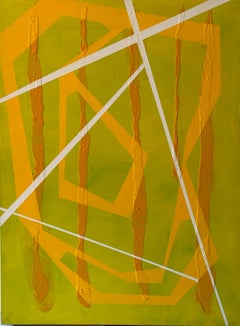Items Similar to French Expressionist Abstract Original
Want more images or videos?
Request additional images or videos from the seller
1 of 8
Jacques Coulais (1955-2011)French Expressionist Abstract OriginalMid 20th Century
Mid 20th Century
$135.94
£99
€115.87
CA$187.54
A$206.16
CHF 108.35
MX$2,503.48
NOK 1,351.59
SEK 1,280.53
DKK 864.74
About the Item
Abstract Expressionist Composition
by Jacques COULAIS (1955-2011) watercolour painting on artist paper
unframed: 14.75 x 13 inches
condition: excellent
provenance: all the paintings we have for sale by this artist have come from the artists studio and are all featured in the artists Catalogue Raisonne.
Jacques, Paul, Firmin Coulais is a French painter born on March 22 , 1955 in Fenioux ( Deux-Sèvres ) and died at the age of 56, the June 25 , 2011 in Niort (Deux-Sèvres). Born into a farming family, he was the seventh of eight children.
Suddenly becoming a quadriplegic at the age of six following poliomyelitis, he overcame this handicap by building with determination an independent life centered on artistic practice and an intense social life. For more than thirty years his house and his workshop have been the center of attraction for many artists, art lovers or simply friends of Niort and all of France.
Coulais began to paint with his mouth, as an autodidact. In 1978, he made the acquaintance of a plastic art teacher who advised him and engaged him on the path of watercolour. The freedom granted to him by this technique as well as the flexibility of its application fascinate him. This meeting and the friendship shared with his teacher, lead him and very quickly direct his work from figurative to abstraction in a way that he explores and that he will then find in the works of Kandinsky and Paul Klee.
Admitted to the School of Fine Arts in Angoulême, he studied there from 1981 to 1984 and obtained the National Superior Diploma in Plastic Expression at the age of 31. A few years later, Jacques Coulais exhibited at the Museum of Niort and since then, his career has been punctuated by his participation in numerous exhibitions organized very regularly in various French cities as well as abroad.
In the 1990s, the AAPBP, Association of Mouth and Foot Painting Artists, opened its doors to him. It gives artists the opportunity to support themselves and devote themselves to their art, free from worries and concerns.
Jacques Coulais becomes a scholarship holder of the Association. Two years later, he obtained the status of associate member. He has been a full member since 1998. This remarkable association organizes numerous artistic events every year. The painting of Jacques Coulais is most often abstract painting nourished by his training, his extensive and precise culture and the dreams, or more frequently nightmares, which populated his nights and whose memory he has preserved through four notebooks that he wrote himself. His painting is done either with his mouth or directly on the ground with the wheels of his chair.
He had a very thick paper or a canvas, usually square, installed at his table, the brushes, the colors. Anyone present could prepare their colours. He gave extremely precise instructions in everything and got exactly the shade he was looking for. They handed him the brush he was holding with his mouth. For large formats, the brush was attached to a rod that could reach a meter in length.
Mastering a very elaborate watercolor technique, he produces his works with his mouth with relentless meticulousness: a “pensive” painting made of “repetitive and patient gestures” which “are a matter of working on oneself ” . This painting refers either to the mandala - a multitude of stains and colors cover the surface and give it its rhythm and its light - or to the calligraphic painting, a singular writing, devoid of meaning whose main driving force is the unconscious, an abstract writing that only expresses its own aesthetics. “It is only a question of one thing, namely, the fundamental impossibility of describing, of writing a representation of the world. Perhaps it is only an attempt at poetic gesture!… For someone whose body has abandoned, gesture is vital.
Bibliography
Catalog of the exhibition at the Musée du Donjon , Niort, 1991.
In absentia , text by Ami Barak, works by Jacques Coulais, ACAPA Éditeur, 1992.
Of the sign, of the interpretation, of the incompleteness : interview with Paul Ardenne and Jacques Coulais, Revue La Licorne no 23 , 1992.
Art, the Contemporary Age , Paul Ardenne, Editions du Regard, 1997.
A small grammar of signs , Jacques Coulais, Cultural Action of the University of Poitiers, 2002.
Portfolio of 18 watercolours, text by Dominique Moncond'huy, 2003.
Paintings Please, Pay Attention, Please , Barbara Polla & Paul Ardenne, Editions Le Bord de l'Eau – La Muette collection, 2010.
Jacques Coulais Pictor Maximus, Body & Canvas . texts by Barbara Polla and Paul Ardenne, interview with Ali kazma, Éditions TAKE FIVE - Trait d'Union collection, 2011.
Continuum , texts by Jacques Coulais and Régis Busschaërt, Éditions Le Courtil des Roses, 2011.
- Creator:Jacques Coulais (1955-2011) (1955 - 2011, French)
- Creation Year:Mid 20th Century
- Dimensions:Height: 14.75 in (37.47 cm)Width: 13 in (33.02 cm)Depth: 1 in (2.54 cm)
- Medium:
- Movement & Style:
- Period:
- Condition:
- Gallery Location:Cirencester, GB
- Reference Number:1stDibs: LU509314091982
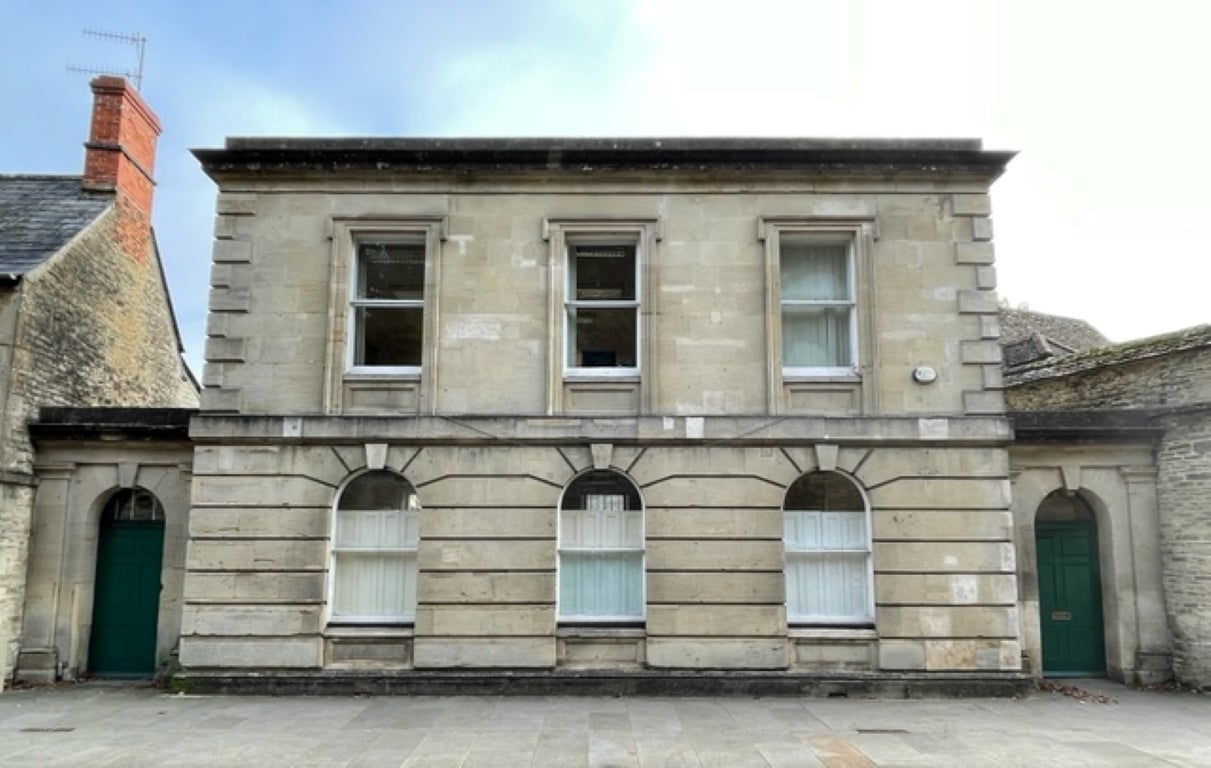
About the Seller
5.0
Platinum Seller
Premium sellers with a 4.7+ rating and 24-hour response times
Established in 1989
1stDibs seller since 2016
4,811 sales on 1stDibs
Typical response time: 1 hour
- ShippingRetrieving quote...Shipping from: Cirencester, United Kingdom
- Return Policy
Authenticity Guarantee
In the unlikely event there’s an issue with an item’s authenticity, contact us within 1 year for a full refund. DetailsMoney-Back Guarantee
If your item is not as described, is damaged in transit, or does not arrive, contact us within 7 days for a full refund. Details24-Hour Cancellation
You have a 24-hour grace period in which to reconsider your purchase, with no questions asked.Vetted Professional Sellers
Our world-class sellers must adhere to strict standards for service and quality, maintaining the integrity of our listings.Price-Match Guarantee
If you find that a seller listed the same item for a lower price elsewhere, we’ll match it.Trusted Global Delivery
Our best-in-class carrier network provides specialized shipping options worldwide, including custom delivery.More From This Seller
View AllFrench Expressionist Abstract Original Painting
Located in Cirencester, Gloucestershire
Abstract Expressionist Composition
by Jacques COULAIS (1955-2011) oil painting on un stretched canvas
unframed: 13 x 12.5 inches
condition: excellent
provenance: all the paintings we...
Category
20th Century Abstract Expressionist Abstract Paintings
Materials
Oil
French Expressionist Abstract Original Painting
Located in Cirencester, Gloucestershire
Abstract Expressionist Composition
by Jacques COULAIS (1955-2011) watercolour painting on artist paper stuck on board
unframed: 10 x 10 inches
condition: excellent
provenance: all th...
Category
20th Century Abstract Expressionist Abstract Paintings
Materials
Watercolor
French Expressionist Abstract Original Painting Artists Studio Provenance
Located in Cirencester, Gloucestershire
Abstract Expressionist Composition
by Jacques COULAIS (1955-2011)
gouache painting on paper/ card
unframed: 19.5 x 13 inches
condition: excellent
provenance: all the paintings we hav...
Category
Mid-20th Century Abstract Impressionist Abstract Drawings and Watercolors
Materials
Oil
French Expressionist Abstract Original Painting Artists Studio Provenance
Located in Cirencester, Gloucestershire
Abstract Expressionist Composition
by Jacques COULAIS (1955-2011)
gouache painting on paper/ card
unframed: 11 x 14.5 inches
condition: very good and impressive
provenance: all the paintings we have for sale by this artist have come from the artists studio and are all featured in the artists Catalogue Raisonne.
Jacques, Paul, Firmin Coulais is a French painter born on March 22 , 1955 in Fenioux ( Deux-Sèvres ) and died at the age of 56, the June 25 , 2011 in Niort (Deux-Sèvres). Born into a farming family, he was the seventh of eight children.
Suddenly becoming a quadriplegic at the age of six following poliomyelitis, he overcame this handicap by building with determination an independent life centered on artistic practice and an intense social life. For more than thirty years his house and his workshop have been the center of attraction for many artists, art lovers or simply friends of Niort and all of France.
Coulais began to paint with his mouth, as an autodidact. In 1978, he made the acquaintance of a plastic art teacher who advised him and engaged him on the path of watercolour. The freedom granted to him by this technique as well as the flexibility of its application fascinate him. This meeting and the friendship shared with his teacher, lead him and very quickly direct his work from figurative to abstraction in a way that he explores and that he will then find in the works of Kandinsky and Paul Klee.
Admitted to the School of Fine Arts in Angoulême, he studied there from 1981 to 1984 and obtained the National Superior Diploma in Plastic Expression at the age of 31. A few years later, Jacques Coulais exhibited at the Museum of Niort and since then, his career has been punctuated by his participation in numerous exhibitions organized very regularly in various French cities as well as abroad.
In the 1990s, the AAPBP, Association of Mouth and Foot Painting...
Category
20th Century Abstract Expressionist Abstract Drawings and Watercolors
Materials
Gouache
French Expressionist Abstract Original Painting
Located in Cirencester, Gloucestershire
Abstract Expressionist Composition
by Jacques COULAIS (1955-2011) watercolour painting on artist paper
unframed: 8.5 x 7 inches
condition: excellent
provenance: all the paintings we ...
Category
20th Century Abstract Expressionist Abstract Paintings
Materials
Watercolor
French Expressionist Abstract Original Painting
Located in Cirencester, Gloucestershire
Abstract Expressionist Composition
by Jacques COULAIS (1955-2011) watercolour painting on board
unframed: 8 x 8 inches
condition: excellent
provenance: all the paintings we have for ...
Category
20th Century Abstract Expressionist Abstract Paintings
Materials
Watercolor
You May Also Like
Belgian Contemporary Art by Jean-Roch Focant - Le Voile
Located in Paris, IDF
Pigments, sand glue & acrylic on wood
Category
2010s Abstract Abstract Paintings
Materials
Wood, Glue, Acrylic, Pigment
French Contemporary Abstract Art by J.-L. Veret - Allégorie
By Jean-Luc Veret
Located in Paris, IDF
Acrylic on canvas
Jean-Luc Veret is a French artist born in 1953 who lives & works between Paris & Corancy, France. He recognizes himself as a protean artist. He is indeed graduated...
Category
2010s Abstract Abstract Paintings
Materials
Acrylic
Belgian Contemporary Art by Jean-Roch Focant - Ca me Tenaille
Located in Paris, IDF
Pigments, sand glue & acrylic on wood
Category
2010s Abstract Abstract Paintings
Materials
Wood, Glue, Acrylic, Pigment
Belgian Contemporary Art by Jean-Roch Focant - Le Coin du Voile
Located in Paris, IDF
Pigments, sand glue & acrylic on wood
Category
2010s Abstract Abstract Paintings
Materials
Wood, Glue, Acrylic, Pigment
French Contemporary Art by Josette Dubost - Taureau
By Josette Dubost
Located in Paris, IDF
Josette Dubost is a French artist born in 1936 who lives & works in Solliès-Pont, France.
Category
2010s Abstract Abstract Paintings
Materials
Canvas, Oil
French Contemporary Abstract Art by J.-L. Veret - Macadam XIV
By Jean-Luc Veret
Located in Paris, IDF
Acrylic & marouflaged paper mounted on canvas
Jean-Luc Veret is a French artist born in 1953 who lives & works between Paris & Corancy, France. He recognizes himself as a protean ar...
Category
2010s Abstract Abstract Paintings
Materials
Acrylic, Handmade Paper
